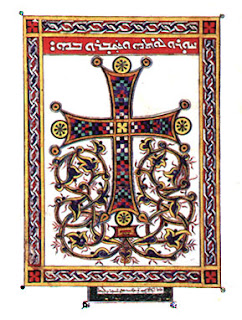My purpose in creating this blog is to explore the history of Christianity that developed East of the ancient Roman world and which is called today The Holy Apostolic Assyrian Catholic Church of the East. The church is in no way a member of the Roman Catholic Church but has the term Catholic in much the same way that Orthodox use the term to indicate the Catholicity of the Church in each diocese. It has also been called the Assyrian Church of the East, The Church of the East, The Persian Church or, unofficially and somewhat in a derogatory manner, the Nestorian Church.
In this blog I prefer the term: The Church of the East. Here is my attempt at a succinct definition of what the Church of the East is in short paragraph. Christianity developed throughout the Roman Empire and by the forth century crystallized as the pentarchy of the patriarchs of Rome, Constantinople, Alexandria, Antioch and Jerusalem. At the same time, the Gospel was preached and received in Mesopotamia and went out across the Persian Sassanian Empire (although it may have begun during the late Parthian period). This Church of the East structured around the bishop, later Catholicos Patriarch, in the capital of the Persian Empire, Ctesiphon, and she missioned across Asia through Afghanistan, India and across to China and Mongolia. The Church of the East is Christianity as developed East of the traditional and ancient Eastern Orthodox world, sharing much theologically and philosophically with Greek speaking Christianity and yet remaining in practice and polity independent.
Originally, the purpose of this blog was to understand why Eastern Orthodox do not share a communion with the Church of the East. This exploration was meant as a study of a ancient Eastern Christian Church that developed wholly within a pagan (later Islamic) world, which was ambivalent at best and genocidal at worst to the name of Christ. I enter this discussion in the midst of a world increasingly pagan and anti-Christian and I seek to find some sense of how and by what means the two great worlds of Eastern Christianity split at the cusp of Islam's advent.
Next week, I shall post about the last time these two churches shared a Eucharist. From there, we will have a good vantage point to begin to see where the two Christian worlds where in relation to each other and what was the substance of their separation.

